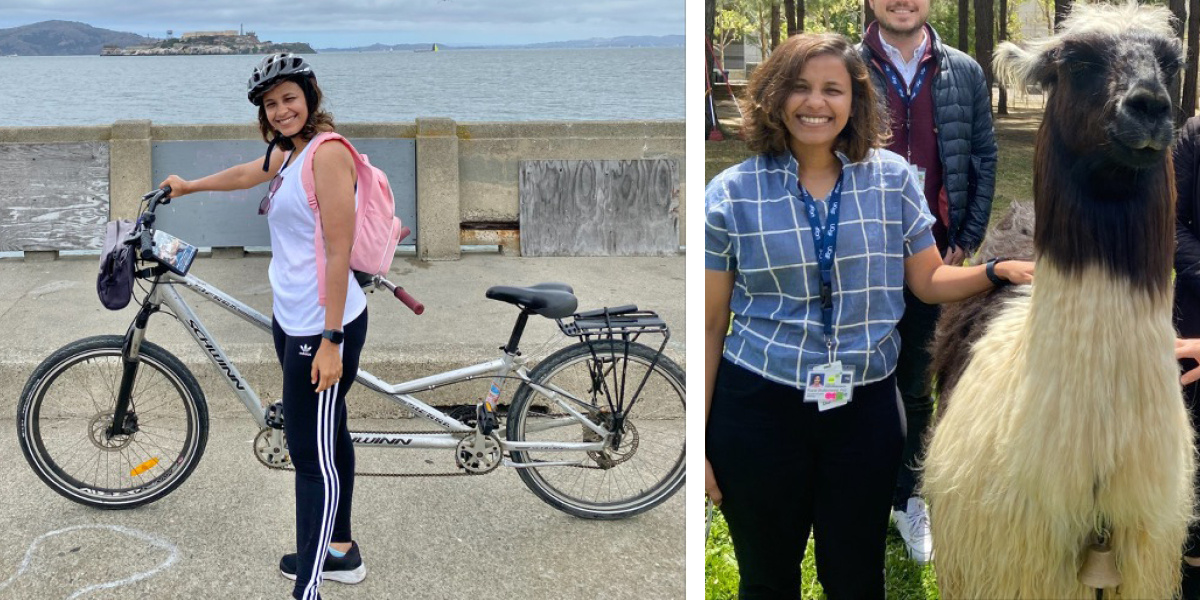Rupsa Bhattacharjee, PhD Spotlight

Aug 30, 2023
Rupsa Bhattacharjee, PhD, a postdoctoral associate specialist, applies her engineering education and industry experience to the broad domains of preventive medicine and improving access to affordable care. More specifically, her research develops algorithms that enable imaging devices to detect and predict diseases like osteoarthritis while also making these diagnostics more widely available on cheaper scanners.
 Growing up in a small town in India’s West Bengal, Rupsa observes that despite the unequal opportunities available to girls and boys, her parents prioritized her education and ambitions: “It was really inspiring to know that they had my back.” Rupsa earned her undergraduate degree in electronics and instrumentation engineering and as she pursued her master’s degree in biomedical engineering, she first heard radiology’s call. She was fascinated by working with images, where she could see new worlds come into view through algorithms.
Growing up in a small town in India’s West Bengal, Rupsa observes that despite the unequal opportunities available to girls and boys, her parents prioritized her education and ambitions: “It was really inspiring to know that they had my back.” Rupsa earned her undergraduate degree in electronics and instrumentation engineering and as she pursued her master’s degree in biomedical engineering, she first heard radiology’s call. She was fascinated by working with images, where she could see new worlds come into view through algorithms.
However, she encountered challenges in bridging academic research and the practical clinical impact she wished to make. So, Rupsa left the academic track and found her place in the MRI Division of Philips Healthcare where she worked for 8 years. She notes that this industry experience provided her with a foundational view of the complex network of people required to make imaging function, from the technologists who operate the MRI system to the nurses who prepare patients for their scans.
To Rupsa, the best prospect for bridging research and clinical application was at UCSF and near an inspiring figure in the field, Sharmila Majumdar, PhD, While in grad school at Indian Institute of Technology, where her biomedical engineering studies concentrated on neuroradiology, Rupsa ventured out of her discipline during an imaging conference to explore other specialties. It was during one of those excursions that she first heard Dr. Majumdar present her research. Dr. Majumdar has long been an icon to Rupsa as a woman Indian scientist of great renown. Rupsa recalled, “In India, we have always been inspired by her and I wanted to be associated with her work in a meaningful way. Once I came here, I was further inspired by how empathetic she is towards her students. She ensures the best working and learning environment so they can go out and flourish in their careers.”
At UCSF, Dr. Bhattacharjee has followed her interest in developing MRI algorithms and has transferred her research from imaging brain tumors and acute ischemic stroke to research in osteoarthritis and musculoskeletal diseases. She now strives to give patients with such diseases more time, to perhaps either predict the disease at an earlier stage or work towards halting the disease progression from one anatomical compartment to another through early detection and follow-up. In the area of early detection and prevention, she works with the biomechanics lab led by Richard Souza, PhD, Pt, on studies such as finding imaging correlations with the biomechanics of the joint, focusing on the movement and postural factors that can act as either inhibitors or catalysts for joint degradation. Dr. Bhattacharjee observes that “In osteoarthritis, we are not fighting death, but we are fighting to give people a quality of life. In our current state, an individual with osteoarthritis might live a long life yet spend 30 years of that lifetime in discomfort or pain.”
Her other research focus, accessibility, involves developing imaging techniques for cheaper value-based MR systems that have smaller energy footprints and require negligible helium for operation, and developing AI-based quantitative imaging tools to give personalized readings on osteoarthritis. Dr. Bhattacharjee is familiar with less developed areas of the world where patients wait for scans for a year or more because the primary diagnostic algorithms for osteoarthritis are specialized for expensive high-tesla scanners. To solve this, she is translating those algorithms to extract similar performances from lower-tesla scanners. She observes that “Spreading scanners in these unserved areas could be really valuable to give people their primary diagnosis, which gives them more time to halt progression. This is a passion project for me.”
When she feels the need to decompress and calm her mind after work, Rupsa takes care to schedule an hour and a half of pleasure reading each day. With a historian’s heart, currently simultaneously exploring the narratives of WWII and the European invasions of Africa. She loves to cook, so she and her husband experiment with food projects, sometimes taking inspiration from the many places they have visited across the world in their travels. She is a Reál Madrid fan and an avid singer.

